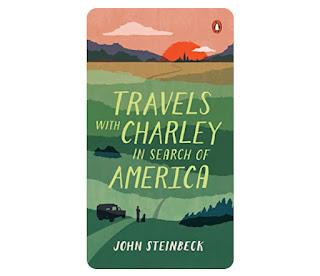Travels with Charley
John Steinbeck’s travel writing, from 1962, called Travels with Charley: In Search of America has always made me want to publish a travel journal. Naturally, it was the name that caught my attention initially, Charley, Charlie, but then the sense of quest. You could search forever. The travelling need never end. In 2003 I proposed this title as a research project to my Masters supervisors at Newcastle University: In Search of French America. But you might not find it, they said. Twenty years on and I realise they knew something about English-speaking cultures. It is impossible to find French in the UK, in the US, Australia, New Zealand, or in the Anglophone communities of India and South Africa.
Why is French so well-hidden?
In Britain there is no free French-language TV channel. No French newspapers sit on the racks in W H Smith; Le Monde is only stocked in major airport newsagents. That's because no one knows any French in the UK, you might think, but just take a look at the statistics from the UK Department for Education. 150,000 16 year-olds take French to GCSE so a quarter of the population, in England, at least have studied French. And 9 million Brits travel to France every year. See Travel Trends (2014) Section 5 UK Residents Visits Abroad, from the Office for National Statistics in Pimlico for more detail.
Your Taste of French for Today
Let's finish this post with a French sentence to add to your stock of vocabulary. It’s in the French imperfect tense:
Café, when used as an adjective of colour, is invariable. This means that it does not add –e for feminine agreement and does not add –s if its noun is plural.
In 1960, John Steinbeck set out with his dog, Charley, journaling his search for America, from Maine to California.
Typing French accents on a QWERTY keyboard. Hold down the ALT key
| à 133, â 131, ç 135, | |
| é 130, è 138, ê 136, ë 137, | |
| É 144, î 140, ô 147, | |
| ù 151, û 150, | |
| « 174, » 175, | |
| " | |

I am still trying to discover why French is so well-hidden in English-speaking cultures.
ReplyDelete